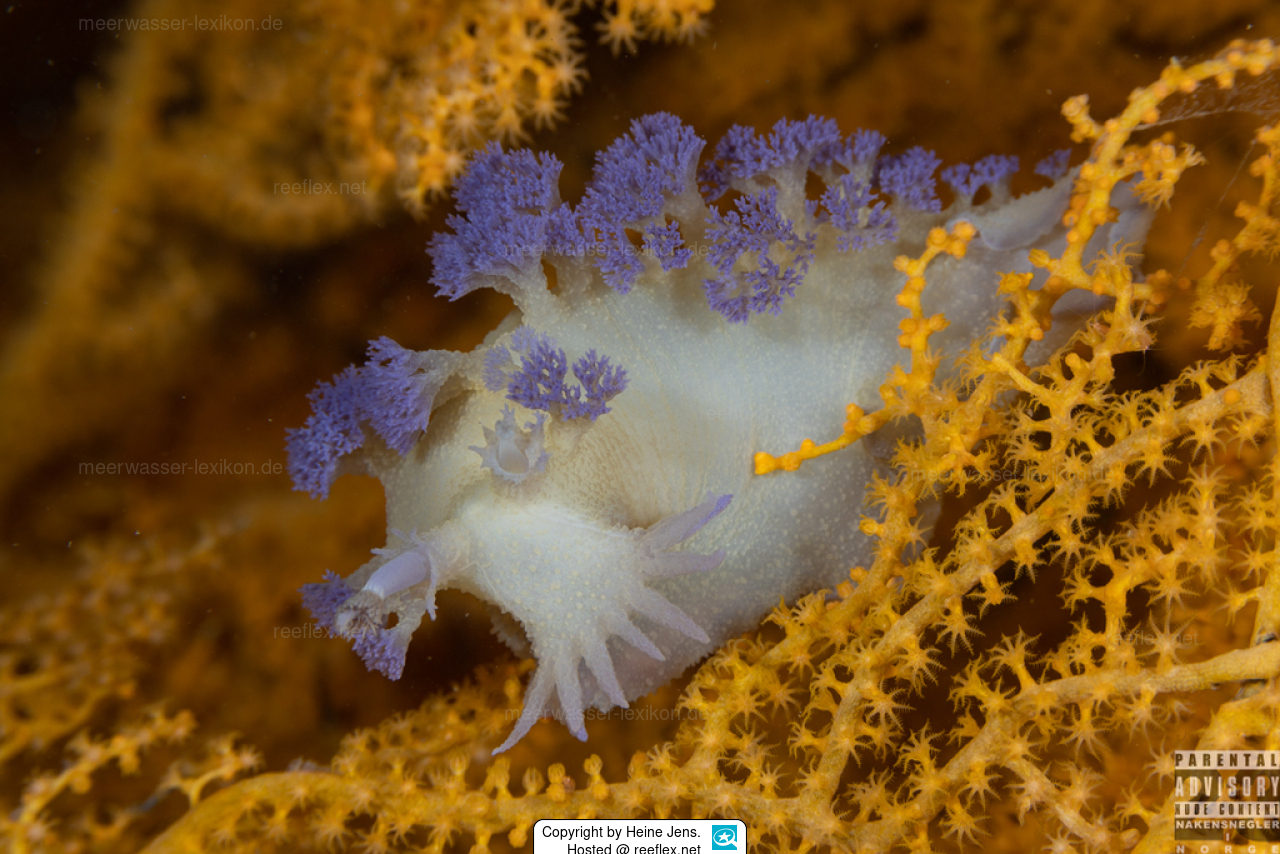Info
Tritonia griegi Odhner, 1922
A nudibranch from the family Tritoniidae. This family includes some of the largest known nudibranchs, with the northeast Atlantic species Tritonia hombergii reaching 20 cm in length. These nudibranchs are found worldwide in warm and temperate seas, as well as in the coldest waters and the deep sea, wherever the octocorals they feed on are found. Depending on the genus or species, members of the family feed on sea feathers, alcyonar soft corals and gorgonians, often having a cryptic shape and coloring.
Tritonia griegi was originally described by Odhner in 1922 from specimens collected by James A. Grieg from Skjærjehamn near Gulen in 1897–1898, and then identified as Tritonia plebeia. The interesting thing about this species is that it has only been found in deeper waters (70 to 400 meters deep) through dredging operations, often carried out in coral-rich areas. It is known mainly from Norwegian waters, with one exceptional observation from the Bay of Biscay (Bouchet 1977).
Feeds on Paramuricea muricata.
A nudibranch from the family Tritoniidae. This family includes some of the largest known nudibranchs, with the northeast Atlantic species Tritonia hombergii reaching 20 cm in length. These nudibranchs are found worldwide in warm and temperate seas, as well as in the coldest waters and the deep sea, wherever the octocorals they feed on are found. Depending on the genus or species, members of the family feed on sea feathers, alcyonar soft corals and gorgonians, often having a cryptic shape and coloring.
Tritonia griegi was originally described by Odhner in 1922 from specimens collected by James A. Grieg from Skjærjehamn near Gulen in 1897–1898, and then identified as Tritonia plebeia. The interesting thing about this species is that it has only been found in deeper waters (70 to 400 meters deep) through dredging operations, often carried out in coral-rich areas. It is known mainly from Norwegian waters, with one exceptional observation from the Bay of Biscay (Bouchet 1977).
Feeds on Paramuricea muricata.







 Heine Jens, Norwegen
Heine Jens, Norwegen












